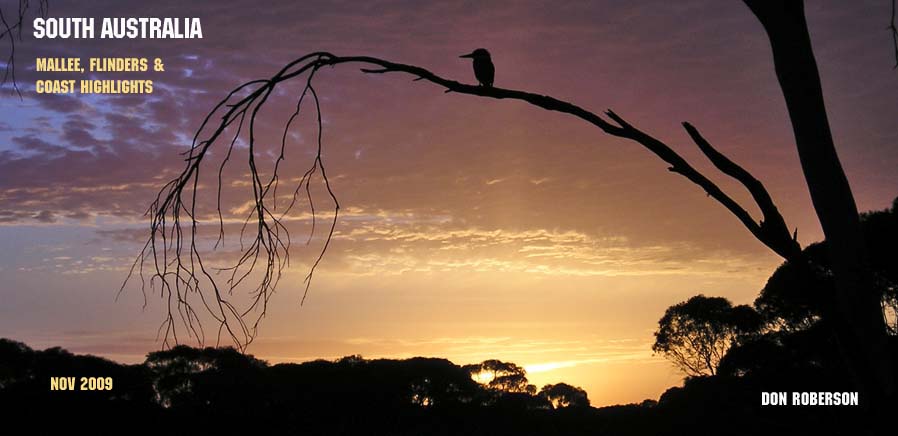
The "five grasswrens in five days" trip to South Australia included a variety of habitats. This page features the mallee, visited in Gluepot Reserve on our first day (18 Nov 2009); the Flinders Range farther north (19 Nov); and brief stops near the Spencer Gulf coast between Port Augusta and Adelaide on our final day (22 Nov). The first two days were exceedingly hot (up to 45°C = 113°F). To reach the mallee from Waikerie, where we had spent the night, one must cross the Murray River on a small ferry (below right). Gluepot Reserve, acquired by Birds Australia in 1997, protects over 54,000 hectares of intact mallee (below right), which, together with adjacent land, forms one of the largest tracts of climax mallee remaining in Australia. |
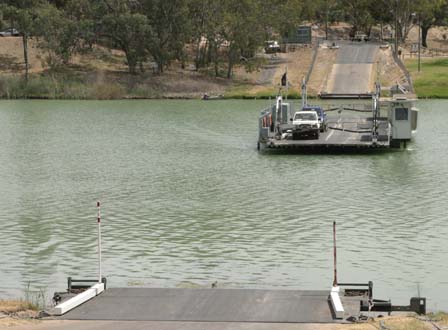 |
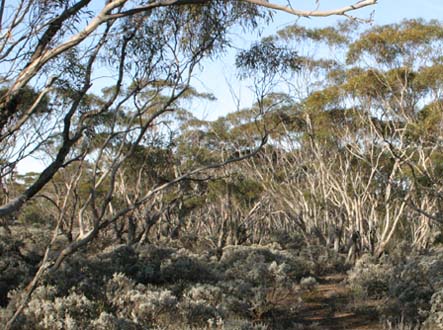 |

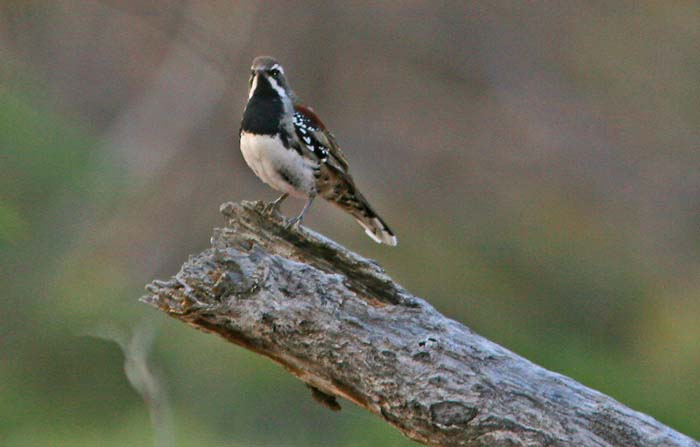
At sunrise, Peter called up and tracked down a Red-backed Kingfisher (above; you can also see it in the title shot at the top of this page). Also brought in by the tape was a fine male Chestnut Quail-Thrush (right).
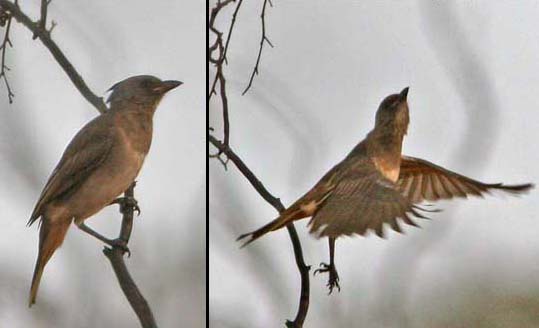 A mallee specialist is Crested Bellbird (left), now tentatively assigned to a new family Oreoicaedae.
Recent molecular evidence suggests that this Australia species is not
closely related to whistlers or other birds with which it has been
placed previously, but is rather more closely related to two
"whistlers" from New Guinea, and perhaps better assigned together to
their own family.
A mallee specialist is Crested Bellbird (left), now tentatively assigned to a new family Oreoicaedae.
Recent molecular evidence suggests that this Australia species is not
closely related to whistlers or other birds with which it has been
placed previously, but is rather more closely related to two
"whistlers" from New Guinea, and perhaps better assigned together to
their own family.
This individual lacks the white throat and black breast of a male, so it is either a female or immature bird. The suggestion of a gape mark may suggest the latter.
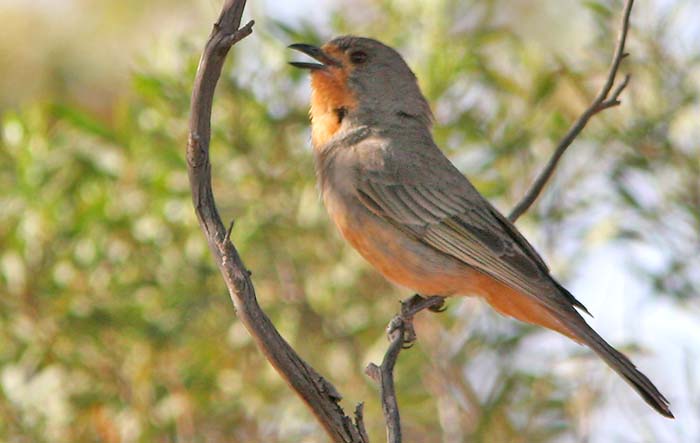
Gluepot Reserve is well known for its population of Red-lored Whistler (right). These fine birds occur primarily in pairs, but require a large block of habitat as territory. The species can be difficult to find. Its world-wide range is quite small, and it is a rare species.
| The Flinders Range (below left) is the largest mountain range in South Australia. Composed of sediments a million years old, and uplifted during the Cambrian era, the rocks include fossils of the first multicellular life on earth. Some of these are highlighted by displays within Flinders National Park. Brachina Gorge (below left) hosts rock-wallabies, and Brachina Creek (below right) was a fine stop on a hot day. Scattered families of Emu (male with four precoial young, below) were seen from the roadsides. |
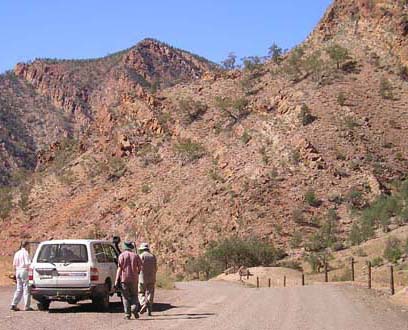 |
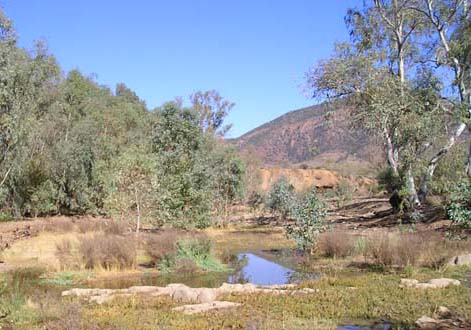 |
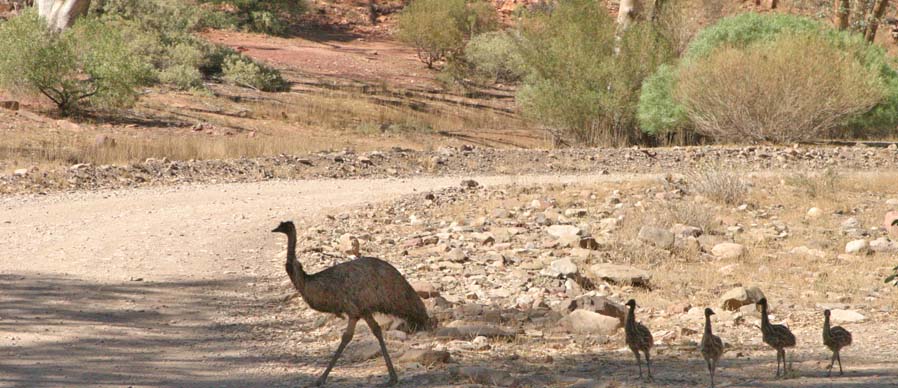

Brachina Creek was a great stop for odes, but birds were also attracted to the pools of water, including this male Variegated Fairywren (right) and a Collared Sparrowhawk that spent a long time tanking up on water in the heat (below).

| Port Augusta (bottom photo on this page) sits at the head of Spencer Gulf. By the time we reached this part of the trip, the weather had dramatically changed with rain, clouds, and cool temperatures. In the bay we scoped a couple of Banded Stilt, a lifer for me (below left; digiscoped; Silver Gull behind), and farther south, at Port Gawler, another lifer was Slender-billed Thornbill (below right) in samphire scrub edging coastal salt pans. At the Arid Land Botanical Gardens in Port Augusta, blooming eucalypts attracted a number of handsome Pied Honeyeater (middle photo below). We also found baby Pieds there that had just fledged. |
 |
 |


South Australia MALLEE, FLINDERS & COASTAL HIGHLIGHTS |
|
South Australia BIRDSVILLE TRACK HIGHLIGHTS |
|
page created 28 Nov 2009
|
© Don Roberson 2009 |